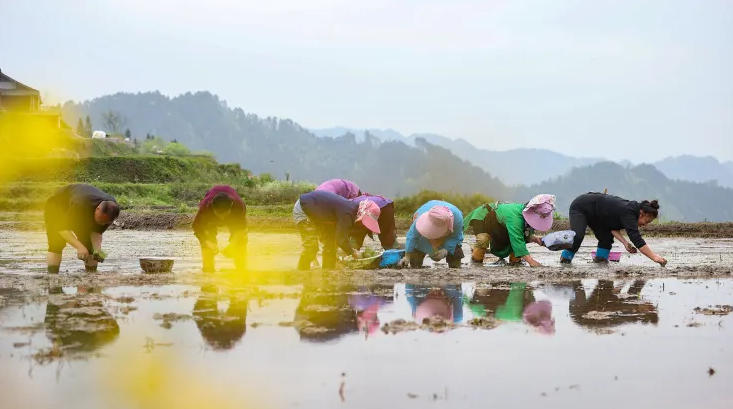June 2, 2025 | 10:33 GMT +7
June 2, 2025 | 10:33 GMT +7
Hotline: 0913.378.918
June 2, 2025 | 10:33 GMT +7
Hotline: 0913.378.918

Chinese villagers growing rice seedlings in a paddy field in Qiandongnan, Guizhou Province, China on April 2023.
“Heavy rain in China’s grain-producing north-eastern region that will reduce yields is likely to put upward pressure on already high global rice prices,” Fitch Ratings said in a recent report.
China is the world’s largest producer of rice, and flood alert levels were raised for three provinces that account for 23% of the country’s rice output: Inner Mongolia, Jilin and Heilongjiang, the report pointed out.
The world’s second largest economy has been inundated by devastating floods in recent weeks. Typhoon Doksuri was one of the worst storms to hit northern China in years, with capital Beijing battered by the heaviest rainfall in 140 years.
Fitch pointed out that many key grain production areas in those three provinces were affected by heavy rains and remnants of Typhoon Doksuri, and they’re set to face “another deluge as Typhoon Khanun moves north.”
The resulting soaked grain fields will reduce crop yields for the year, the Fitch report stated, although the full extent of the damage is not yet clear.
“This will lift China’s domestic grain prices and likely drive higher imports in 2H23 to partially offset the potential yield loss,” the credit ratings firm said, adding the country may need to look to import more rice if its own harvests fall short, and that could drive global rice prices even higher.
Global rice prices have surged to their highest in close to 12 years, according to the Food and Agriculture Organization All Rice Price Index.
Other market watchers are estimating higher rice prices ahead after India banned non-basmati white rice exports last month, and Thailand urged farmers to plant less rice in a bid to save water as a result of low rainfall.
India, which accounts for more than 40% of global rice trade, banned exports of non-basmati white rice on July 20, as the government looked to tackle soaring domestic food prices.
Rice prices are hovering at decade highs, with rough rice futures last trading at $15.98 per hundredweight (cwt).
In addition to rice, the Fitch report also cited corn and soybean among major crops grown in Inner Mongolia, Jilin and Heilongjiang, which will be impacted by flood risks. China is expected to import more of both grains this year compared to the last.
(CNBC)

(VAN) Vikas Rambal has quietly built a $5 billion business empire in manufacturing, property and solar, and catapulted onto the Rich List.

(VAN) Available cropland now at less than five percent, according to latest geospatial assessment from FAO and UNOSAT.

(VAN) Alt Carbon has raised $12 million in a seed round as it plans to scale its carbon dioxide removal work in the South Asian nation.

(VAN) Attempts to bring down the price of the Japanese staple have had little effect amid a cost-of-living crisis.

(VAN) Fourth most important food crop in peril as Latin America and Caribbean suffer from slow-onset climate disaster.

(VAN) Shifting market dynamics and the noise around new legislation has propelled Trouw Nutrition’s research around early life nutrition in poultry. Today, it continues to be a key area of research.

(VAN) India is concerned about its food security and the livelihoods of its farmers if more US food imports are allowed.